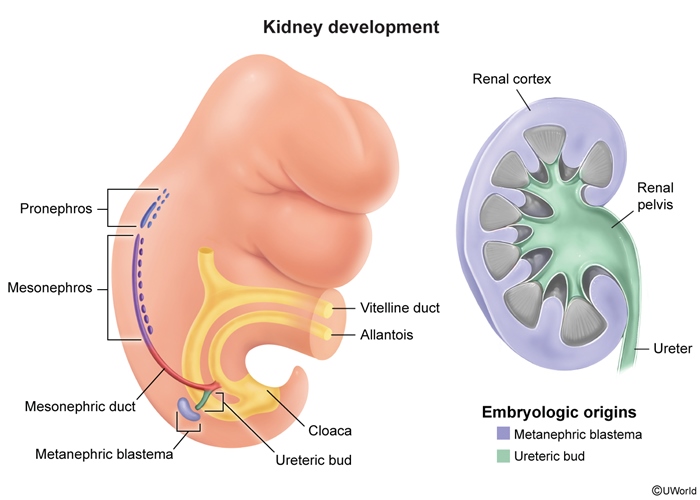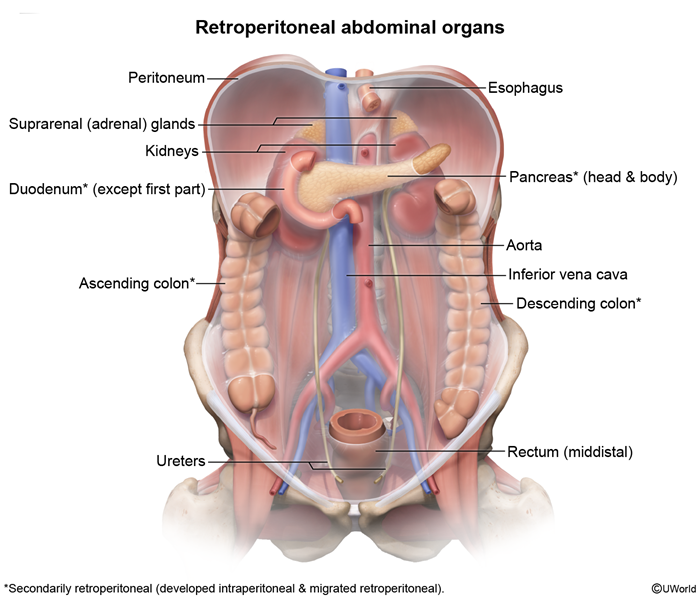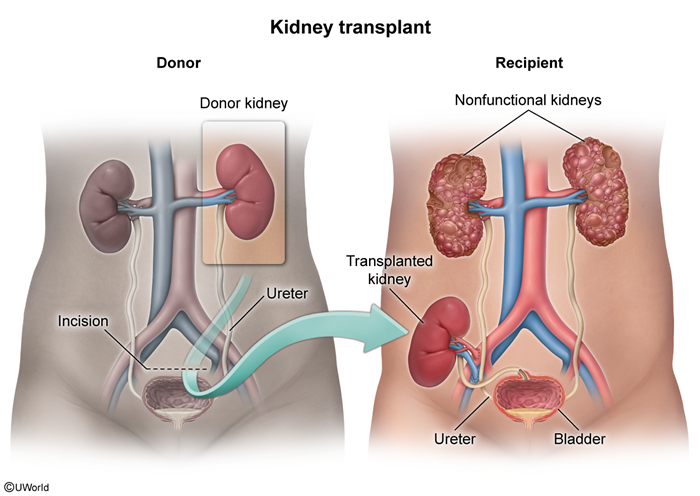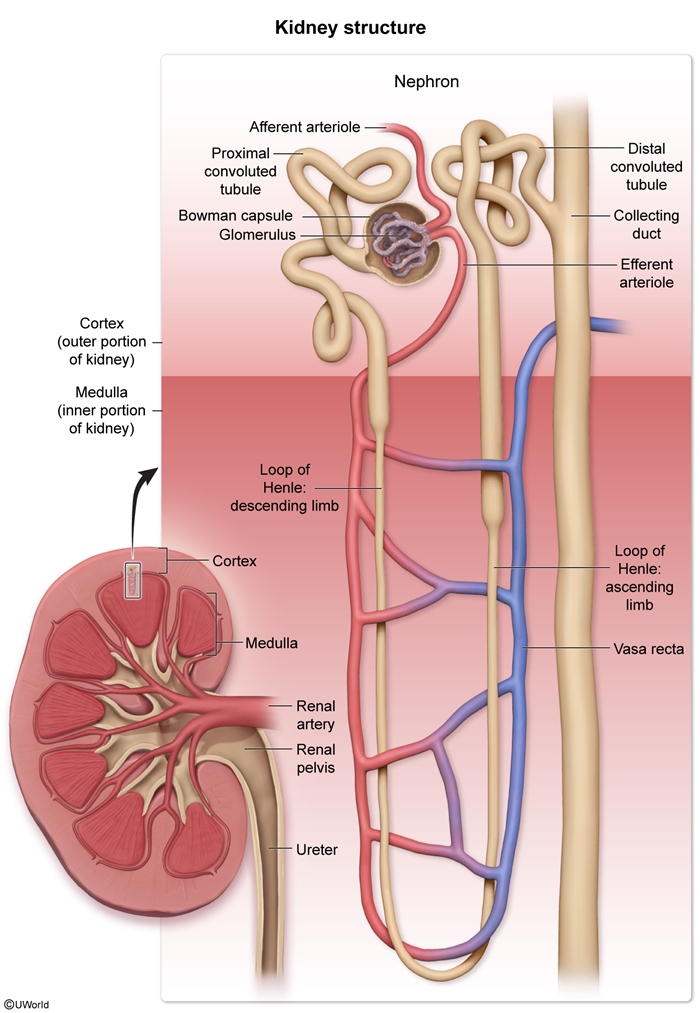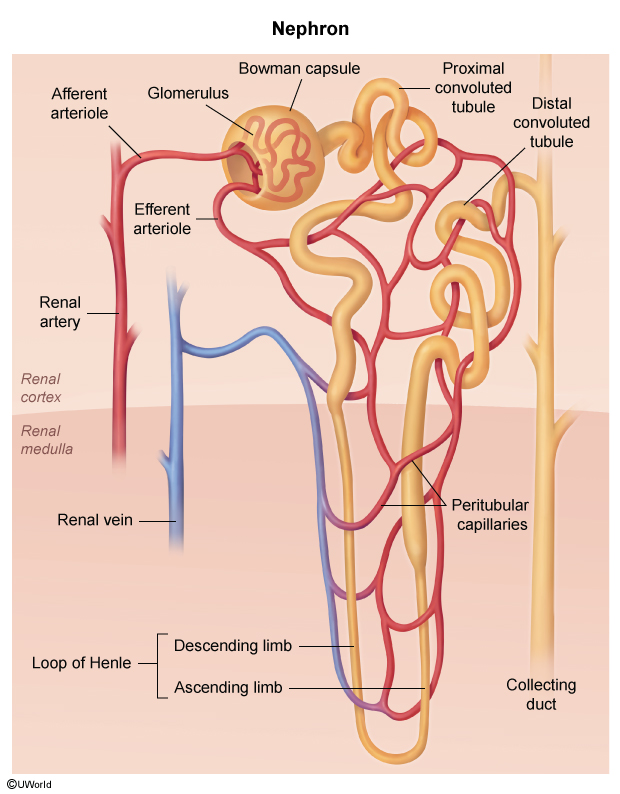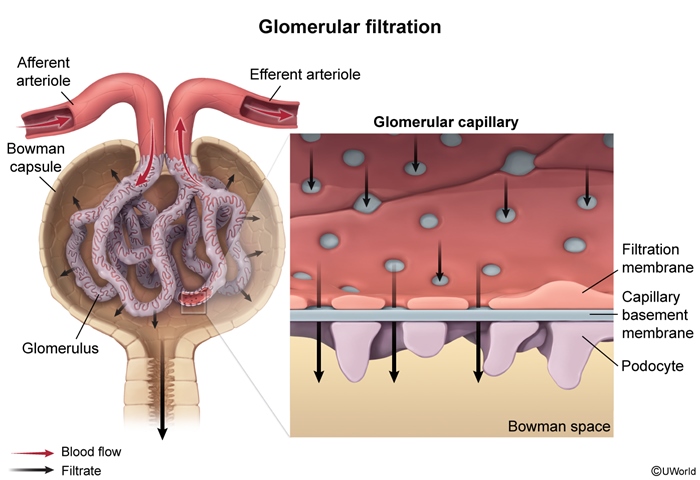Renal Anatomy And Physiology
Article Sections
Introduction
The kidneys are a pair of bean-shaped organs responsible for maintaining systemic homeostasis. Their key functions include filtration and waste excretion, sodium and water balance, electrolyte and acid-base handling, and various endocrine roles (eg, vitamin D activation). This review explores structural and functional characteristics of the kidney, from its embryologic development to the molecular mechanisms underlying filtration and reabsorption. Endocrine functions are discussed in separate articles.
Embryology and gross morphology
The definitive kidney, or metanephros, originates from the intermediate mesoderm. Its development proceeds through a series of stages (pronephros, mesonephros, metanephros) during the fourth week of embryologic development. The metanephros arises from the reciprocal interaction between the ureteric bud (which forms the collecting system) and the metanephric mesenchyme (which differentiates into nephrons) (
Continue Learning with UWorld
Get the full Renal Anatomy And Physiology article plus rich visuals, real-world cases, and in-depth insights from medical experts, all available through the UWorld Medical Library.
Figures
